Creative Cloud All Apps
£56.98/mo
Get Photoshop and the entire collection of creative apps across desktop and mobile. Learn more
Fashion photography can be exciting world to work in, whether you want to make it as a professional or turn your passion for fashion into a hobby. Start your journey or refine your work as a fashion photographer with our guide – including expert tips, tools and settings that’ll make your shoots a success every time.

Fashion photography is a combination of product, portrait and fine art photography, where art meets commerce. It’s the clothes, models, poses, lighting, backgrounds and more – all working together to create beautiful imagery to sell an aesthetic and lifestyle.
At its basic level, the definition of fashion photography is any image that highlights the clothes, accessories and fashion items in the best way possible. Above all else, fashion photography is about making garments desirable.
“Fashion photography is the way a photographer uses their own eye and perspective to highlight, curate or speak to anything in the fashion industry.”
– Photographer Flo Ngala
The history of fashion photography traces back to the mid-19th century, in the days when fashion photographs were taken in the court of Napoleon III and images of high-class members of Victorian society posing in their finest outfits started to appear. But it really took off at the start of the 20th century when its use for advertising exploded.
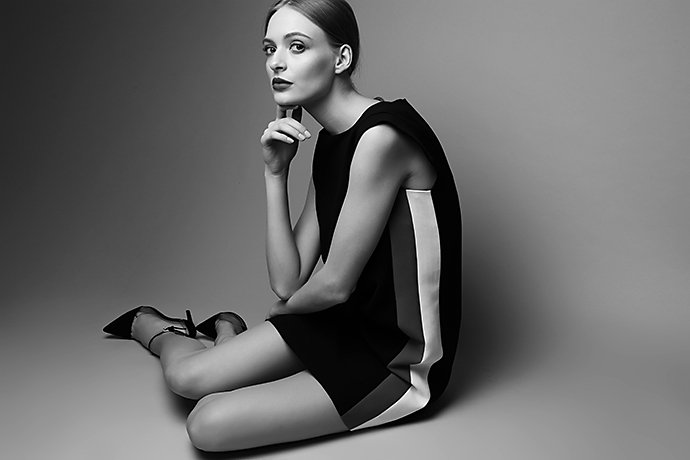
Adobe Creative Cloud for fashion photography students.
If you want to give your fashion photography a lift when it comes to editing, you might be interested in Adobe Creative Cloud for students. Students and teachers can save up to 65% off the package – giving you access to apps like Photoshop, Illustrator, and InDesign for less.
Fashion photography covers such a broad area that it’s perhaps easiest to break it down by type or style. Some fashion photographers focus on just one approach, while others are experts at a wide range of shoots. These are the 10 main types of fashion photography.
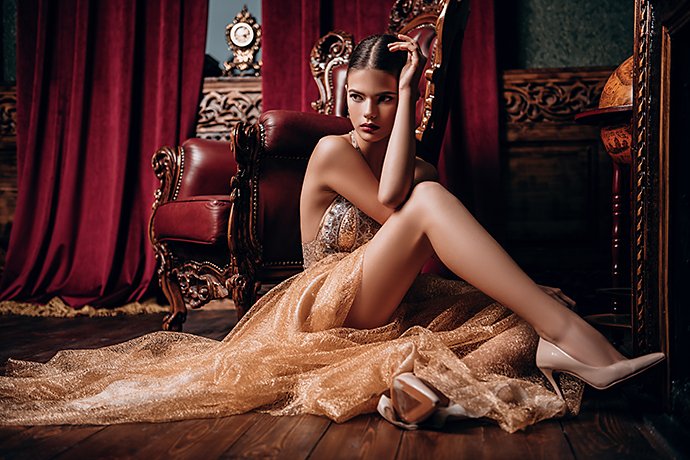
Many of the best fashion photographers exhibit their images in galleries around the world, blurring the line between commercial and artistic work.
With high fashion photography, the focus is on the creative vision, style and concept as much as it is on the clothes. Big budgets, famous models, actors and complex set-ups capture incredible detail – with prints appearing in high-end exhibitions and fashion photography books.
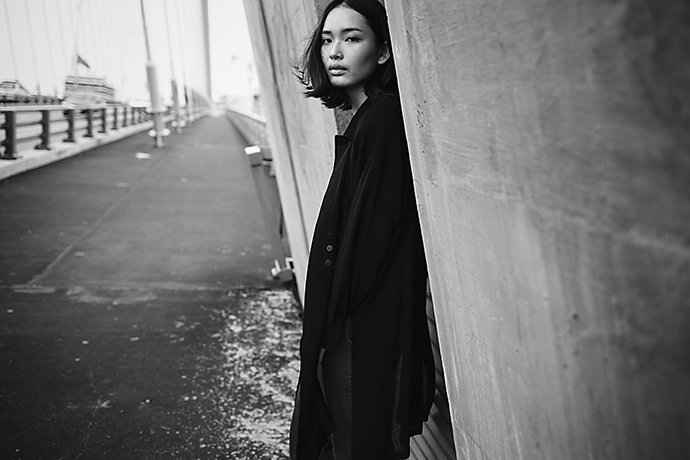
Editorial overlaps with high fashion photography, but the images tend to appear in magazines or books. Also, its direction is influenced more by the editorial team and fashion items than a creative concept. Images are aspirational, telling a story through a lifestyle and commercial photography to appeal to the reader.
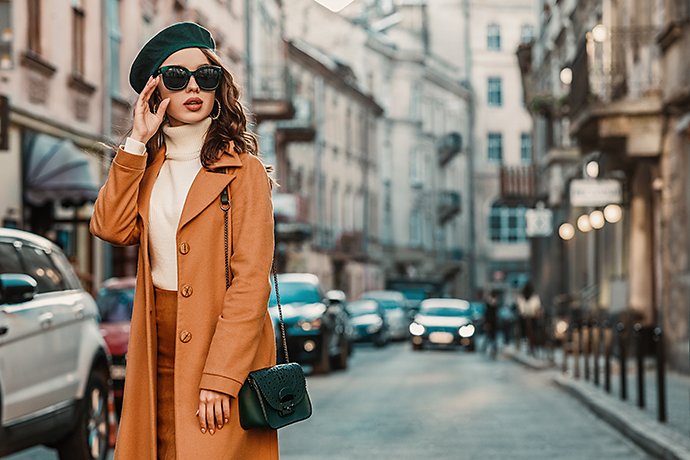
Street style photography is a more natural form of fashion photography, capturing people, their clothes and style out in the world. It’s what you see on social media and across magazine spreads featuring the latest trends. Street fashion shoots are staged to give the appearance of normal life to create the illusion of a natural, candid approach.
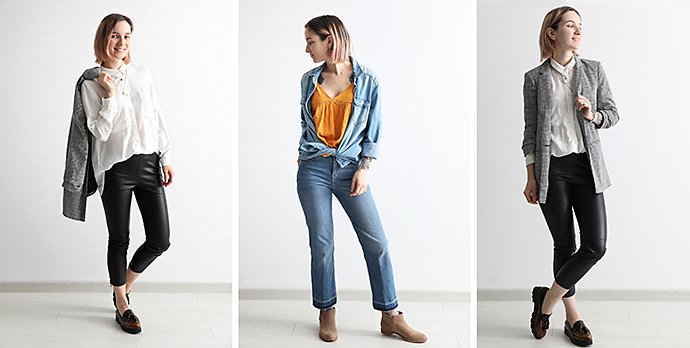
This is a type of product photography where the aim is to clearly highlight the clothes, garments or accessories. It gives the reader a clear view of the clothing and has less of a focus on lifestyle or intricate backdrops. Shoots normally happen in a studio, with neutral backgrounds to maintain focus on the products.
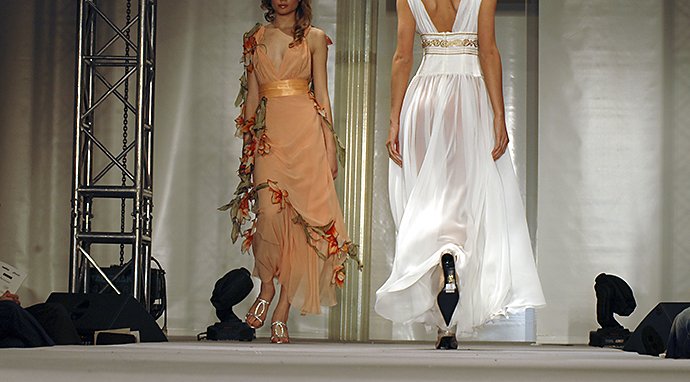
Shooting catwalks is a form of fashion photography. It’s all about capturing the movement, poses and clothes as the designers have chosen to present them. Runway photographers need fast lenses to deal with low light levels and must be agile to capture the moment.

Designers often present their latest collections to potential buyers in a look book. It’s similar to catalogue photography, except the shots are all connected by a concept to sell the entire collection – not just one product. Look book photographers need to capture the mood and personality of the collection. There’s no ‘right way’ to do this as it varies depending on the designer.
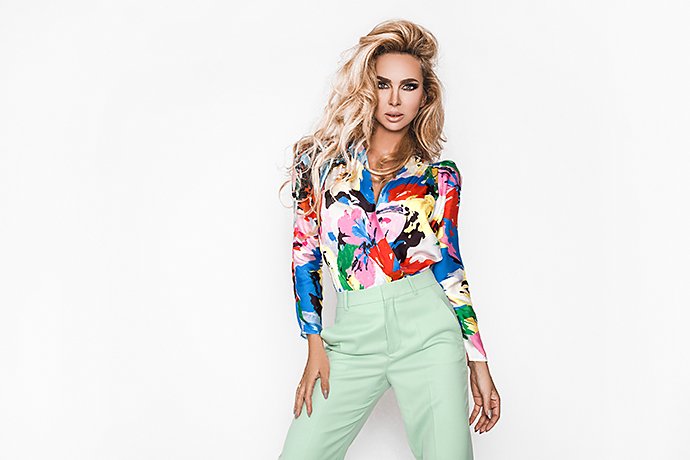
Similar to catalogue photography, advertising images focus on the products for a commercial purpose. This can be a spotlight on one specific product or a complete outfit, depending on the client. Advertising fashion photography can vary from shots using neutral backgrounds to highlight the garments, to vibrant lifestyle shots that reflect brand ideals.

Unlike most other types of fashion photography, glamour puts the model at the heart of the image. It has more in common with portrait photography as make-up, clothes and accessories complement and enhance the image to bring out the model’s qualities.
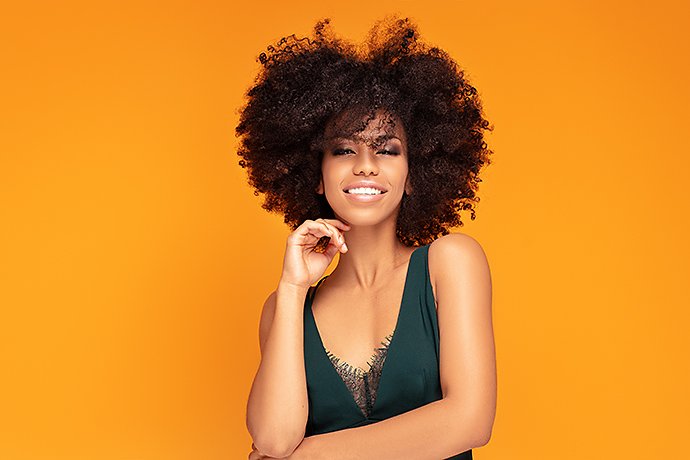
Portrait photography aims to capture the personality of a model through the background, lighting, setting, and style. It lends itself to fashion by highlighting the subject’s style in a creative and compelling way. You can find examples of portrait photography used on fashion shoots for catalogues, editorial, advertising and most other purposes.
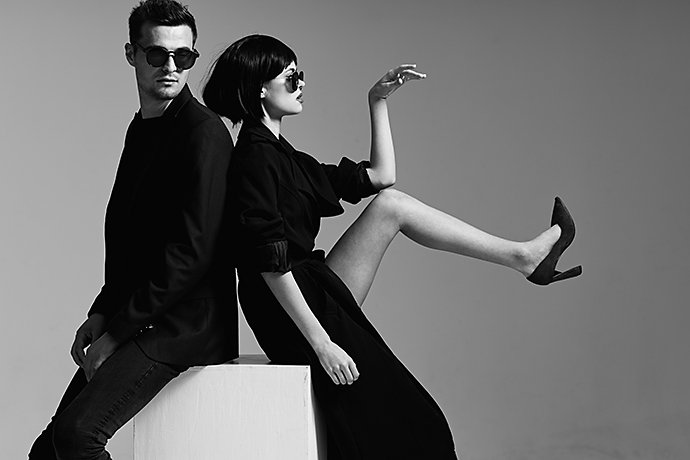
Fashion photography has always been on the cutting edge of cool – and what’s cooler than black and white images? Unless the bright colours of certain clothes need accentuating for editorial or advertising purposes, black and white photography for fashion shoots can be an effective and creative approach – especially to profile monochromatic outfits.

There are two main parts of the fashion photography process – shooting images and editing them. Our experts are on hand to help get your fashion imagery just right.
Take inspiration from fashion photographers before you pick up a camera. Advice from experiences professionals could give you an eye for what works and help you to create an impactful shoot.
“You have to look at images to see what you find attractive about image making and then you can figure out how to implement that in your own way.”
– Flo Ngala
Start with casual fashion shoots and use a friend as a model. From the lighting to the styling, you’ll improve with practise. Try different lighting set ups, compositions, angles and poses to see how they look. Don’t worry about not having the right clothing straight away.
“Just drape fabric around your model and play around with household items. If you can make something from nothing, you’re golden.”
– Photographer Grace Rivera
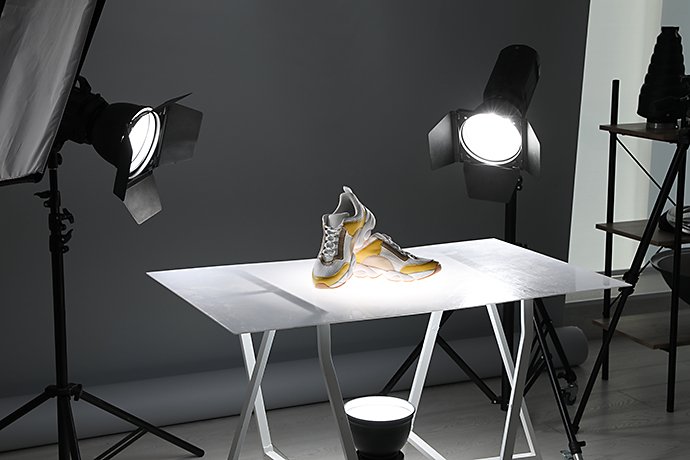
Study portrait lighting techniques for ideas on illuminating your indoor fashion shoots. Combine strobe lights and V-flats to diffuse the atmosphere and play around with different settings until you find one that works.
When it comes to shooting, check your light setup before your models arrive. Take some test shots of yourself or a stand-in and make any necessary changes. This will confirm whether your lighting and camera settings are correct.
It’s important to make your fashion models feel at ease. This is a primary tenet of portraiture. Practise photographing someone you know before working with models. See how you need to direct them to get the shots you want. Try to get candid shots at off-guard moments. When you’re working with someone new, it can make all the difference to spend a little time just breaking the ice and getting to know them.
“The beauty of fashion photography is that it comes from people being themselves.”
- Flo Ngala
Begin with portraits and simple sitting and hand poses before moving onto any extravagant shoot ideas. Getting the basics right with still imagery is vital – as is understanding how your model works with the environment. Once you and your model are comfortable, you can start trying some shots involving movement and more complex poses.
“Props are like a little crutch. It gives them something to fall back on.”
– Editorial Photographer Nicolle Clemetson
Adobe Creative Cloud for fashion photography students.
If you want to give your fashion photography a lift when it comes to editing, you might be interested in Adobe Creative Cloud for students. Students and teachers can save up to 65% off the package – giving you access to apps like Photoshop, Illustrator, and InDesign for less.
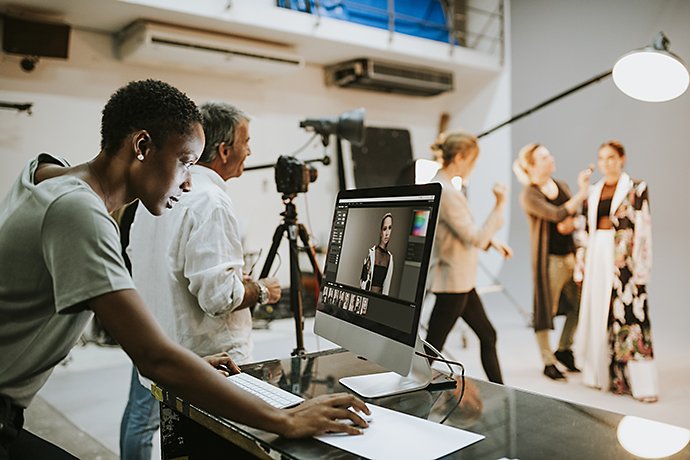
Taking fashion photos is about planning and intuition. Editing is about thoroughness. These are a few editing tips that can bring your images closer to perfection.
“The selection process itself is incredibly important. You can tell some photographers have an eye, but they don't make the right selects or haven’t figured out the best editing.”
– Flo Ngala
Use Adobe Lightroom to make your selections. Go through your photos with a discerning eye and choose the ones worth editing. You might take 100 shots and choose just 10 of those to edit. You can then make basic edits in Lightroom, using tools like Tone Curve, before moving over to Adobe Photoshop for retouching.
Within Adobe Photoshop, the Sponge tool is a great way to selectively bring out the colour in certain areas of your fashion photos. For example, you can enhance the green of someone’s pullover without oversaturating their skin tone. Understand when to use Lightroom vs Photoshop.
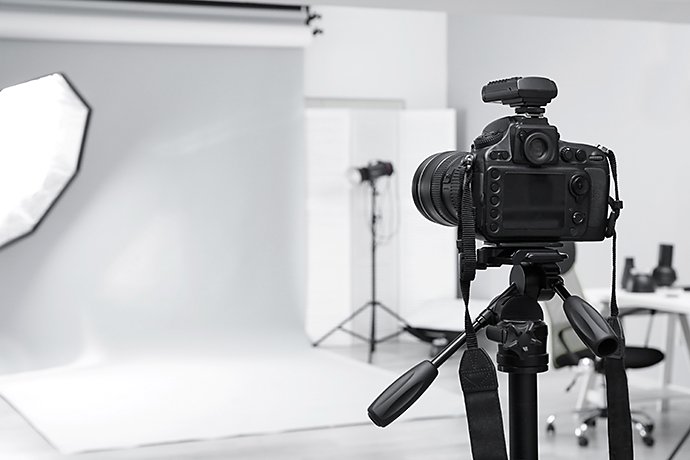
To photo fashion models and items, you need the right tools. A lot depends on the types of images you plan to capture. As a good starting point, the following should set you up well as a fashion photographer:
o White reflectors provide a neutral look.
o Silver reflectors work best in duller conditions.
o Gold reflectors can create a warm, bronzed look in sunshine.
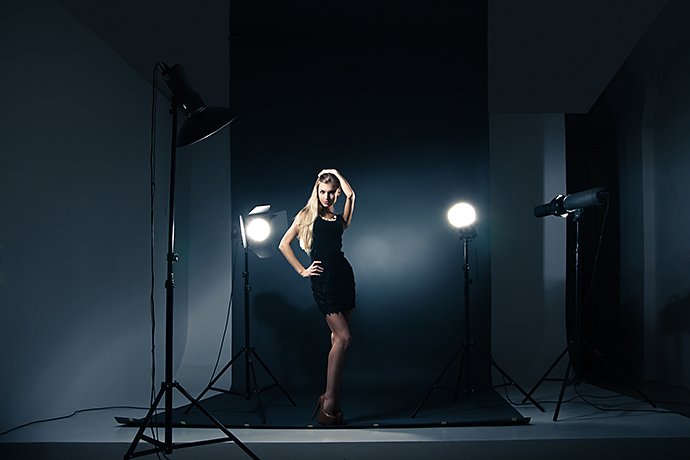
Lighting is a vital consideration for any fashion shoot – whether you’re shooting in the studio using artificial lights or guided by nature outdoors. Both have benefits, so it depends on what you want from your final images and the kind of photography you’re creating.
Study portrait lighting techniques for ideas on how to light your indoor fashion shoots. Keep it simple at first though, with one light source and a reflector or diffuser to craft the best setup for your model and aims. For example, V-flats help diffuse the light from a strobe to fill the room.
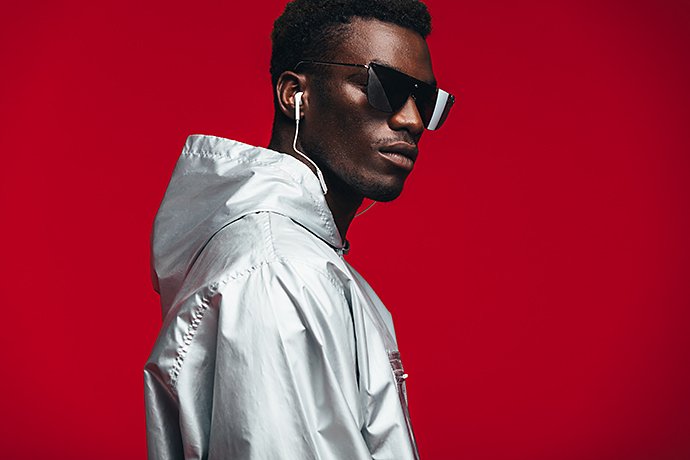
Think about what’s in the shot and how it impacts the illumination – will props, the background colour or clothing itself reflect or absorb the light? Working with neutral colours can provide a grounding in studio lighting, before introducing additional light sources, reflectors and bolder fashions that can affect the brightness.
“I always have one or two strobe lights and V flats. I could go in [to the studio] on the weekends and play around with the lighting. It’s still a never-ending exploration.”
– Grace Rivera
Before shooting on location you can practise with natural light indoors. Position your model near a window with no artificial lights to see how daylight falls on their face, creates shadows, and the effect it has on your final fashion imagery.
When you’re shooting outdoors, one of the first things to do is adjust the white balance of your camera to capture the colours as you see them in print. Remember to readjust it when you change location.
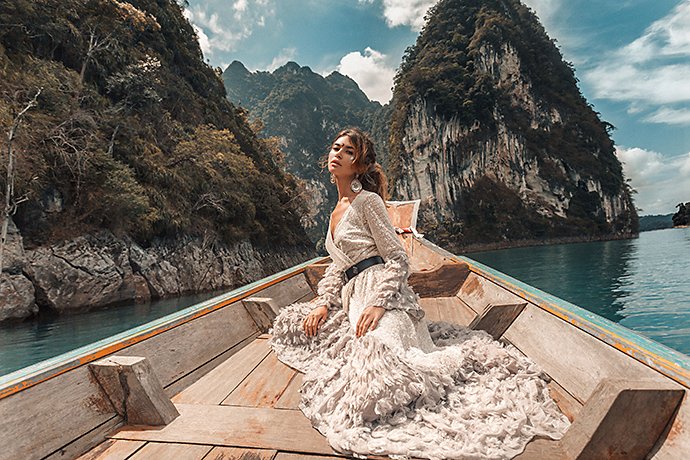
Many factors affect the lighting setup outside, so consider the:
In dark, dull settings you may need to use flash alongside the natural ambience. On bright days, the right positioning of reflectors can enhance your fashion photos. For a better understanding of how natural light impacts fashion photos, take a few shots of the same pose from different angles and compare the results.
“To me, it’s all about lighting. That’s the difference between a good and a great photo.”
– Flo Ngala
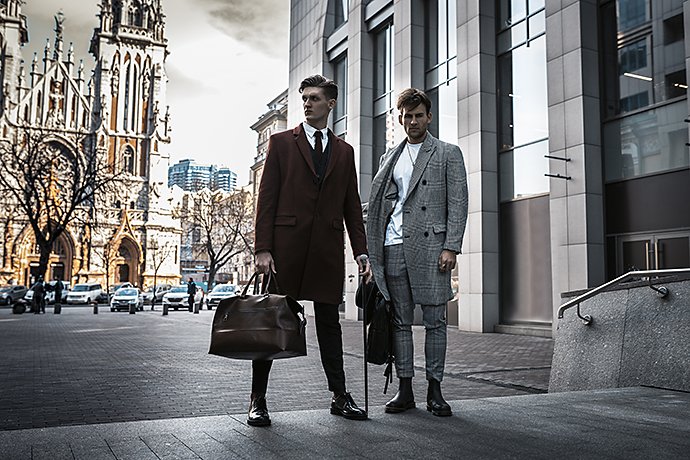
Fashion modelling photography differs from fine art photography and portraiture in that there is rarely cause for the artistic use of focus. Tweaking your settings as you go is important as you react to changing light, backgrounds, and elements – especially when shooting on location.
“A lot of the mistakes I make are with my camera settings – if I’m shooting too fast and get ahead of myself.”
– Grace Rivera.
The main camera settings to consider when shooting for fashion photography include:
During basic studio shoots, where everything needs to be sharp and in focus, try these settings and adjust from there:
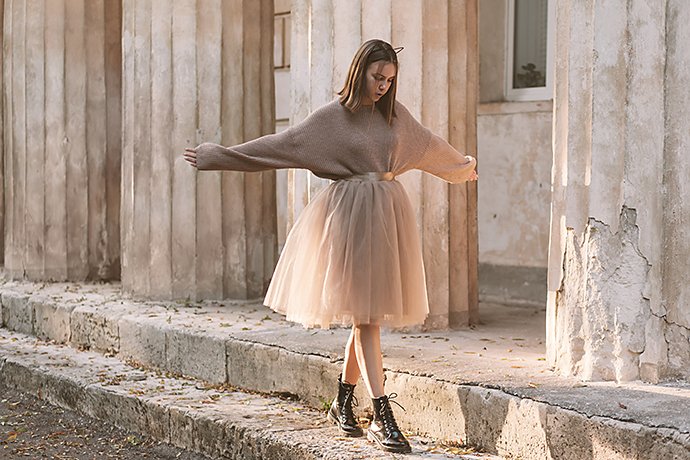
“I like my photographs with a really shallow depth of field, but when I’m shooting fashion and my aperture is really low, the edges of the clothes might be out of focus, so I have to adjust it.”
– Flo Ngala
The composition of your images helps the viewer focus on what’s important, too. A few simple tips for effective composition:
The following photography experts contributed to this fashion photography guide.
Creating great portrait photography.
Take a step closer to perfect portraits with tips and advice from professional photographers.
An introduction to portrait lighting.
Learn the basics of portrait lighting to bring your subject’s story to life.
Expert product photography tips.
Learn how to polish up your products and get tips for capturing great product photography.
Tips for effective hand poses and sitting poses.
Learn methods for effectively photographing human hands and seated subjects.
£21.98/mo
Get Photoshop on desktop and iPad as part of Creative Cloud.
£56.98/mo
Get Photoshop and the entire collection of creative apps across desktop and mobile. Learn more
£16.24/mo
Save over 65% on 20+ Creative Cloud apps — includes Photoshop. Learn more
£27.99/mo
Get Photoshop and 20+ Creative Cloud apps plus exclusive business features.
See what's included | Learn more